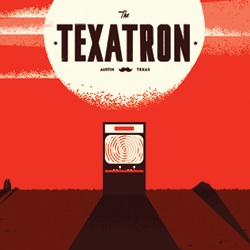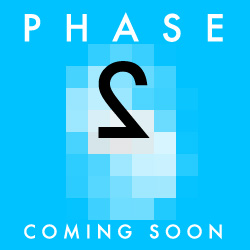GIMME INDIE GAME: BENZIDO/RYAN CHISHOLM’S EVACUATION
Officially today’s most dangerous time-waster is Benzido/Ryan Chisholm’s deceptively difficult airlock puzzle, Evacuation. Procedurally generated (and therefore somewhat uneven from level to level — particularly when it inexplicably crowds all crew into the cockpit) and spanning some 200 levels, your goal is simply to open color-coded locks to eject invaders off your ship, while not exposing crew to either the aliens or the vacuum.
Evacuation [via TIGSource]
See more posts about: Gimme Indie Game, Offworld Originals
GIMME INDIE GAME: DEREK YU’S SPELUNKY
There’s an easy way to tell when you’ve got a veritable indie hit on your hands: its TIGSource forum thread goes from 0 to 34 pages in just over a week, before the game’s even been properly finished. So it has gone with Derek Yu’s Spelunky.
You might know Yu from his work as co-creator of the previously mentioned Aquaria, TIGSource itself, or more mischievously from his 2006 freeware gore-em-up I’m OK, a fully playable answer to Jack Thompson’s ‘Modest Videogame Proposal’ (which I wrote up slightly more in depth at the time).
Most easily and commonly described as Spelunker meets Rogue, Yu’s game retains all of the unforgiving difficulty of both (though much more forgiving than the former’s trip-to-death strictness I noted before), but excels at the latter’s sense of procedurally-generated loot collecting and cave crawling, just now in 8-bit sidescroller form.
In your travels downward, you will die — you will die a lot, sometimes within seconds of entering the first level, for stupid reasons and even when you’re at your most careful, but every cheap death is a necessary part of the learning process (its readme.txt implores, “Don’t be afraid to die! But also don’t be afraid to live!”), and the sense of accomplishment for a smart and successful run is one of the best we’ve seen in some time.
Yu hits all the right notes from simply its run/jump physics (not since Cave Story has it felt so joyous to just move), to its itchy-trigger-fingered shopkeeper, destructible landscape and Indy Jones boulder chases, to that burdensome sense of dread that builds with each successive bar of gold you collect, knowing how important it is that this time you make it out alive. His algorithms are able to smartly weave together endless scenarios with those building blocks for players to create their own stories in ways the code couldn’t possibly have conceived.
Now thankfully natively supporting joypads (its somewhat clumsy initial keyboard configuration being the only thing hampering full-on recommendation at the time), Spelunky would have made an apt ‘best indie’ of 2008, but let’s now call it a bar set very, very, high as we plunge into 2009.
Spelunky [TIGSource]
See more posts about: Derek Yu, Gimme Indie Game, Offworld Originals, Spelunky
GIMME INDIE GAME: I FELL IN LOVE WITH THE MAJESTY OF COLORS
Currently making the rounds is Gregory Ludus Novus Weir’s I Fell In Love With The Majesty Of Colors, which he succinctly describes as “a tale of love, loss, and balloons.”
It does share a lot in common with Daniel Benmergui’s previously mentioned I wish I were the Moon, both aesthetically and in its multiple endings it’s up to the player to experiment with to ferret out. Part of me wishes Weir had the same confidence to leave the narrative implied rather than explicit, though I suspect that has more to do with its participants not ‘reading’ quite as clearly as The Moon‘s in their low-res form.
But either way it’s a successful playfully lonely Cthulu-ish journey of discovery that I’ll not go into too much detail on for fear of giving away its best lines — have a look and let us know what you think.
I Fell In Love With The Majesty Of Colors [Kongregate]
See more posts about: Gimme Indie Game, Offworld Originals
GIMME INDIE GAME: MINOTAUR CHINA SHOP, HAPPINESS IN SHATTERY
Minotaur China Shop might not be Flashbang’s most accessible game (that prize would have to go for the much more parent-friendly puzzler Splume), but it is its funniest. It’s not just the latest blog entries from the overly defensive Minotaur himself, though that helps, or that in-game, Flashbang have played everything perfectly, wryly straight, even when the pegasus in leopard print walks in and desires the ‘fancy plate.’ It’s also the more subtle joke that, at heart, China Shop is a subversion of and a gentle dig at the current casual game glut of Diner Dash clones.
But it’s also that, played “right,” Flashbang have perfectly pegged that ever-present anger-management underlying tension. You get that from the Minotaur’s stiff bipedal wobble (who you “drive around” more than “make walk”), as well as the precariousness of the shop packed tight with breakables, and the absurdity of the beast choosing a new profession so dainty at its core (that’s made the juxtaposition an apt cliche from the start). All together, there’s never any doubt that you’re only one misjudged turn away from havoc.
And, smartly, Flashbang have tuned that havoc into just as lucrative an option as playing straight: once the Minotaur has let his rage get the best of him, insurance kicks in and compensates you for every broken item, though you’ll obviously lose your customer base and have to deal with security firing arrows to keep your aggression in check.
Set in five separate days over which you can tune and upgrade both the happiest and angriest play styles as you wish, Minotaur lends itself perfectly to experimentation and replay — exactly what you’d want from a web game — and has instantly rocketed itself to the top handful of our 2008 indie game list.
Minotaur China Shop [Blurst]
See more posts about: Blurst, Flashbang, Gimme Indie Game, Offworld Originals
GIMME INDIE GAME: RESCUE: THE BEAGLES
Originally created in June for a TIG Source competition based on procedurally generated content, indie developer 16×16’s winning entry, Rescue: the Beagles, has finished subsequent tweaking and been released as an official final version. As you might expect from the name, your humanitarian mission in the game is to hop between three layers of terrain picking up hurt and otherwise wandering beagle pups before they’re carted away to an animal testing facility.
This sounds easier than it is: the deceptively complex game requires more multitasking ability than you might expect, and relies heavily on split second decisions on which layer to jump to next as its randomly generated peaks and valleys come together and diverge.
The game is almost Spelunker-level strict (see: this awesome Japanese video for more on that) on how far you can fall to the next layer down, and any dog that manages to pass you by is an instant lose, but stick with it long enough and you’ll manage to work yourself into a very satisfying rhythm.
Rescue: the Beagles [16×16, via IndieGames]
See more posts about: 16x16, Gimme Indie Game, Offworld Originals
GIMME INDIE GAME: GRAVITY BONE
This is one of my biggest regrets of 2008: had I played Brendon Chung’s indie PC game Gravity Bone on first glance it would have made The Offworld 20 without question. Instead, I waited until after the new year, thinking it’d be a game I’d have to sit down and take in like a slow meal.
This turned out not to be true: you can finish Gravity Bone in about as much time as it takes to complete many games’ tutorials, and get more out of the experience than you did most games in their entirety. If Portal was gaming’s latest great novella, Gravity is its mini-comic: colorful, concise, and economical.
The less said about the actual mechanics of the game, the better, as any exposition threatens to give away its best twists. The generics, though: it’s a double-mission exotica-tinged snapshot of the life of a contract killer and his infiltration of a secret jet-set society; spy-fi by way of Fellini’s leisure life and LucasArts’ Grim Fandango. None of this is said, of course, just confidently implied through its symbols and traces of its signal drifting number-station mumblings.
Currently employed at Pandemic designing levels for EA’s just released Lord of the Rings: Conquest, Chung’s mini-game feels like an exercise in escape, a nights-and-weekends rough sketch of the kind of games he by all rights should be doing full-time. Even with its double-take ending (and for all its gnawing mysteries [what was going to be mapped to inventory slot 3?]), it’s over all too soon, and — though he’s detouring through his top-down Xbox 360 Community Game Atom Zombie Smasher — it’s something we sincerely hope he comes back home to soon.
[Bonus love: Take a closer look at its second mission office-tower directory — you might notice some familiar names.]
Gravity Bone [also at Blendo Games]
See more posts about: Gimme Indie Game, Offworld Originals
GIMME INDIE GAME: DANIEL BENMERGUI’S I WISH I WERE THE MOON
Daniel Benmergui’s I wish I were the Moon is likely the only explicitly Italo Calvino-inspired game you’ll play all year, and, even in its prototype form, is cutely innovative to boot. Benmergui created the game to show at Tokyo Game Show’s Sense of Wonder Night — one of the first summits to show off independent games and those seeking to do something new (and was the place where the void-painting game The Unfinished Swan first appeared before its preview video swept the blogs).
Even as quickfire and seemingly simple as the game is, I wish I were the Moon‘s photo-mechanic — unjustly overlooked outside of a handful of games like Pokemon Snap, Fatal Frame, and PC Engine/PlayStation oddity Gekisha Boy — brings a welcome change of pace, and tells a lovely and/or heartbreaking story at the same time.
Ludomancy » I wish I were the Moon
See more posts about: Gimme Indie Game, Offworld Originals






